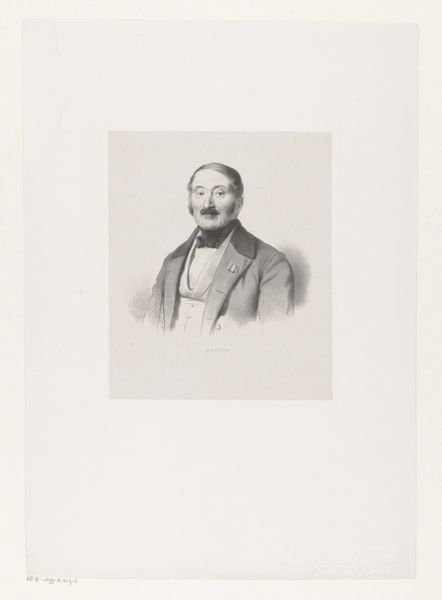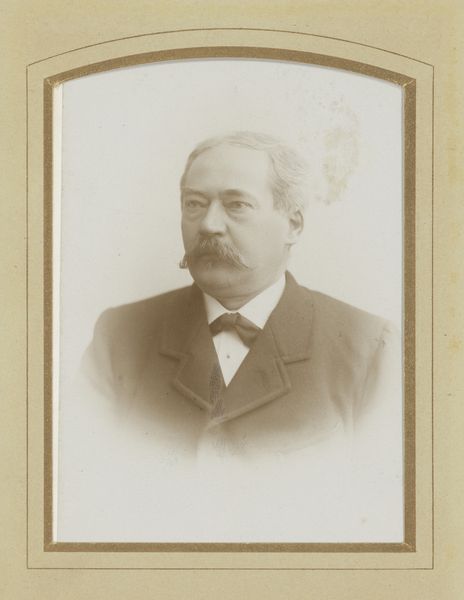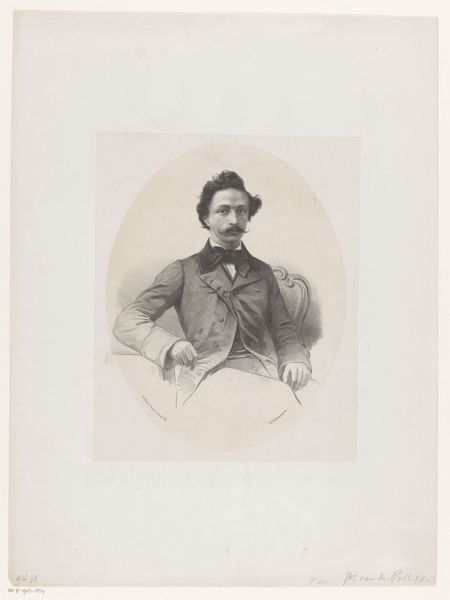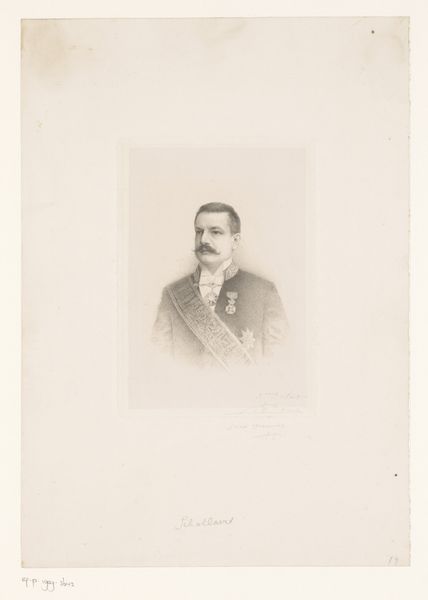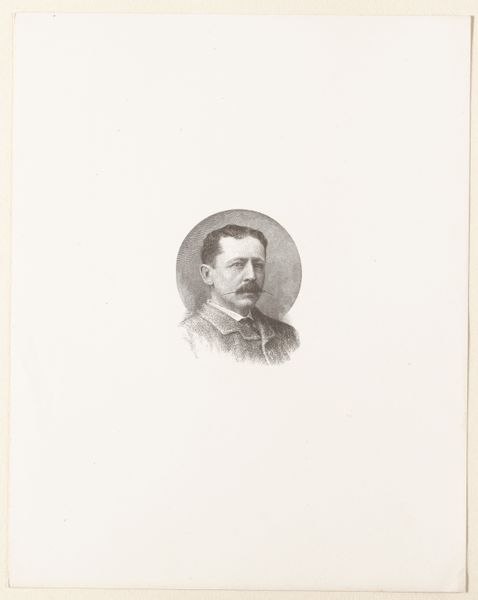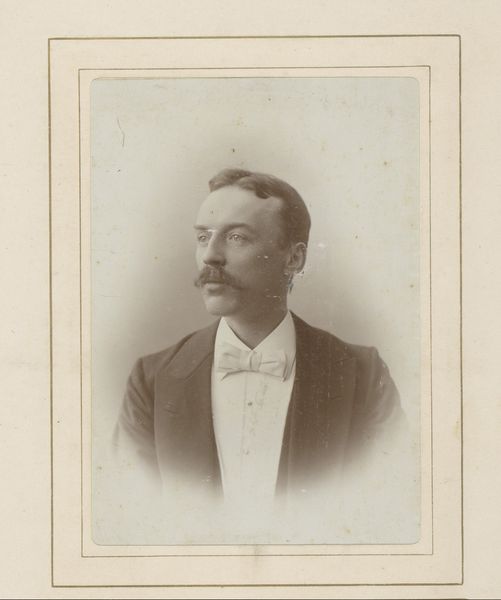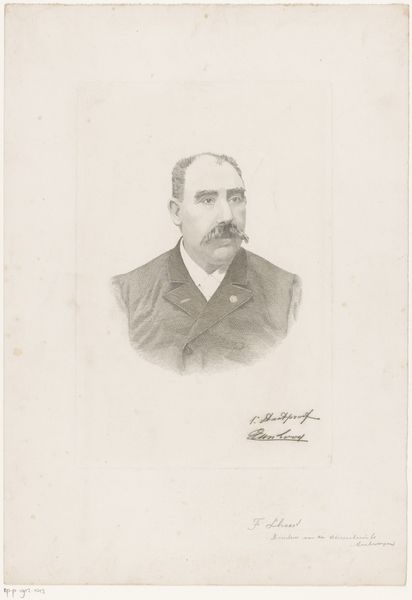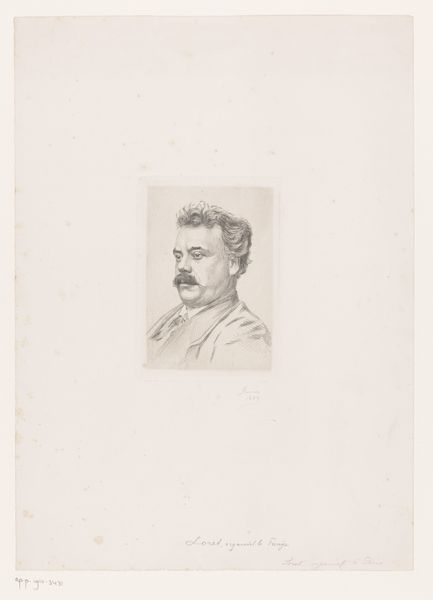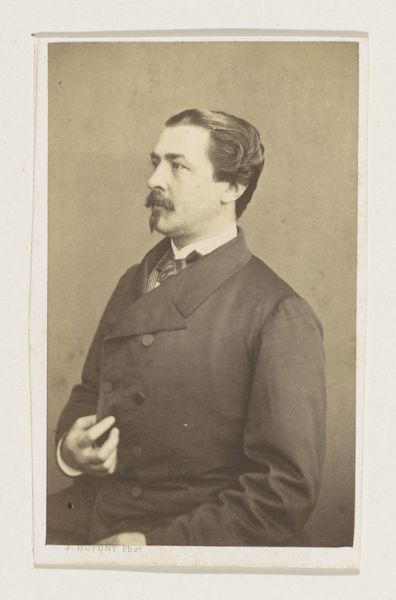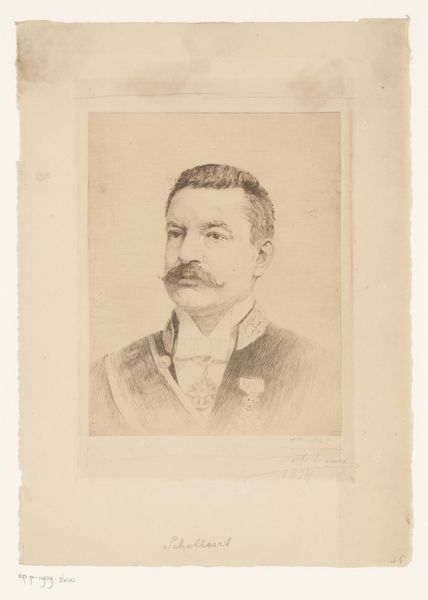
drawing, print, pencil, graphite
#
portrait
#
pencil drawn
#
drawing
# print
#
pencil sketch
#
charcoal drawing
#
pencil drawing
#
pencil
#
graphite
#
portrait drawing
Dimensions: 264 mm (height) x 186 mm (width) (bladmaal)
Curator: This drawing, attributed to Henrik Arnold Hamilkar Sørensen and titled "Mandsportræt", is estimated to have been created sometime between 1864 and 1944. Editor: Immediately, I'm struck by its austerity, the rather stark simplicity. The gentleman seems to be floating against an ethereal backdrop. The level of detail in his face, the shadowing, especially around his eyes and that impressive mustache, contrasts heavily with the emptiness surrounding him. Curator: The artist employed pencil and graphite, quite typical for portrait studies of the era. Think of the rise of photography and the simultaneous interest in capturing likeness through traditional media. Sørensen likely created this either as a study or preparatory piece. The institutional and social function of the portrait remained crucial. Who was he representing, and for what purpose? Editor: The sharp contrast between his almost stern expression and the softer rendering of his clothes presents an interesting tension. What societal pressures shaped his identity, and how does the portrait either reinforce or subvert those expectations? There’s an underlying vulnerability I find fascinating, hinted at in the downturned corners of his mouth. Curator: Well, looking at the formal elements, the slightly averted gaze could suggest that thoughtful introspection was perhaps prized over direct confrontation. But who was this man, and what narratives did the museum and society perpetuate about his standing and representation? These works, you see, can either uphold dominant powers or discreetly question them. Editor: Perhaps it's the contemporary lens I apply, but there's a poignant quality here, like peering into the interiority of a man constrained by societal expectations. It triggers thoughts about masculinity, presentation, and the roles we are expected to perform. He's present, but almost absent. Curator: Indeed, by critically examining its reception over time and its placement within the museum’s broader narrative, we gain new insight. Ultimately, a drawing like "Mandsportræt" isn’t just an individual depiction; it embodies the societal attitudes and historical currents that shaped both its subject and its creator. Editor: It reminds us of the ever-present need to examine who is remembered and how – whose narratives gain prominence in our art institutions. This is a stark, intimate portrait; more than just an artistic creation, it’s an invitation for cultural dialogue and intersectional awareness.
Comments
No comments
Be the first to comment and join the conversation on the ultimate creative platform.
